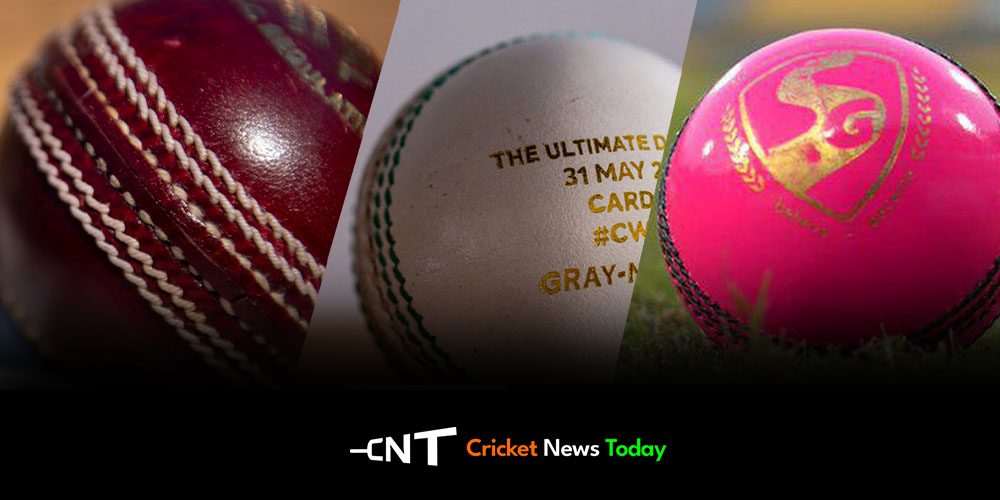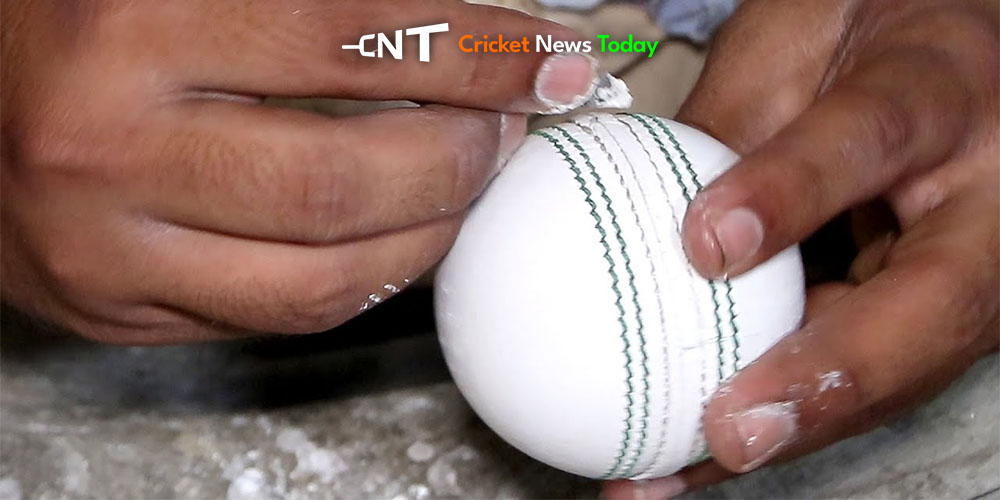Looking at a cricket ball flying across a stadium while the crowd goes silent is an experience like no other. Cricket balls are centrepieces of the game of cricket.
Without a ball, there are no catches, sixes or boundaries and finally, there is no cricket.
Apart from the obvious, the ball has blessed us with legendary bowlers like Muttiah Muralitharan and Shayne Warne.
Differently built balls can affect the players’ performance and in turn, change the outcome of a game.
This is why a cricket ball must be carefully crafted with standardized regulations for all professional and first-class cricket matches. Let us dive into some interesting details.
What is a Cricket Ball?
A cricket ball is a hard solid ball used to play cricket. The exact measurements of the ball are standardized by the rules of first-class cricket.
What’s Inside a Cricket Ball?
As per international standards, a cricket ball has a core made of granulated cork and folded cork strips.
The cork is then wrapped around by tightly wound strings of yarn to create strength of tension.
Lastly, a leather cover is stitched over it and the ball is pressed, covered with a fine polish and tested for bounce. One ball has approximately 80 stitches going around its circumference.
The final product is then packaged for use. All high-quality balls are hand-stitched by professionals or made with high-tech machines with extreme attention to detail and precision.
Making a good quality cricket ball is a process that requires expertise and time.
A single ball takes around 45 minutes to an hour just for stitching. The entire process takes around three man-hours.
Each ball is hit approximately 480 times in its test match career. Therefore, Cricket ball manufacturers have to comply with first-class cricket regulations in the making process.
How Hard is a Cricket Ball?
Cricket balls are extremely hard to the extent that they can cause serious accidents.
If someone gets hit by a speeding ball, it can lead to serious bruises and injuries.
For this reason, batsmen, wicketkeepers and sometimes fielders use helmets as protective equipment.
What is the weight of a cricket ball?
As per first-class cricket standards, cricket balls weigh differently for men and women.
The weight of a cricket ball for men’s cricket ranges from 155.9 grams to 163 grams.
This ball is 224 to 229 millimetres in circumference.
Cricket balls for women weigh from 140g to 151g. The Circumference of the ball ranges from 210 millimetres to 250 millimetres.
The diameter for both these balls should range from 2.80 to 2.86 inches or 7.11 to 7.26 centimetres.
To ensure standard weight and size, manufacturers weigh each ball and put it through a ring to ensure perfection.
Types of Cricket Balls and Their Best Uses

Cricket balls come in two primary colours, Red and White. Red balls are for test cricket and white balls are for limited overs matches.
More recently, the pink ball has been used for test matches held at night. The materials used for all types are the same. The difference arises in the colour and polish of the balls.
However, some experts claim that red and white balls deliver varying results on the field. Let us take a closer look at different balls.
Red Ball
Red balls are used in Test cricket and First-class cricket. They go back as early as 1937.
In night matches or low-visibility weather, red balls assume a brownish colour and blend with the ground, hence hindering visibility.
White Ball
White-coloured cricket balls are used in limited-overs cricket. The white colour gives these balls better visibility at night.
They were introduced to provide better visibility in matches played under flood lights. The making process for white balls is the same except for the colour of the dye.
However, it has been observed that white balls perform poorly than red balls. They tend to get stained by mud and are difficult to spot at times.
Pink Ball
Pink balls have better visibility than red balls and deteriorate at a slower rate than white balls. They were introduced in the 2000s for test and first-class matches played at night.
Pink balls were first used in an international match in 2009 and in a day-night Test in 2015.
Factors that influence a Cricket Ball’s selection

The quality and structure of a cricket ball affect many factors like the bounce rate, the speed of the delivery and the swing rate.
A well-stitched seam, fine leather and a balanced shape are factors that determine the quality of a cricket ball.
In a premium competition-grade ball, the cover is crafted from four leather panels, shaped like the segments of a quartered orange.
The ball’s equator is sewn together with string, creating a seam featuring six rows of stitches.
How to Choose the Right Cricket Ball for You?
A cricket ball must be selected carefully as per the duration and time of a match. Cricket balls in India are majorly handcrafted.
They offer durability but lack in quality as compared to their international counterparts.
Foreign brands Kookaburra and Dukes make world-class cricket balls. These balls are used in all first-class international cricket matches.
Cricket Ball Pricing
The price of a cricket ball varies depending on several factors, including the brand, quality, material, and intended use. Here’s a general layout for cricket ball pricing.
T20 Cricket Ball Price
In T20 Cricket, high-quality, hand-stitched, leather balls are used. The price point for these balls ranges from 2000 INR to 15000 INR or more.
Kookaburra is an Australian sports company. It is the leading manufacturer of cricket balls for all high-profile matches.
These machine-stitched leather balls are durable, precision-made, and designed for long-lasting use and consistent performance.
Cricket Ball Price
For club, domestic and national level cricket, hand-crafted cricket balls are used.
The price point for these ranges from 1000 INR to 5000 INR. Companies like Dukes and Gray-Nicolls are preferred for these cricket setups.
These balls are long-lasting, affordable and suitable for competitive games.
For training and practice, generic cricket balls made with leather or synthetic material can work. These balls are affordable and durable but offer comparatively less promising results.
If you play recreational or informal cricket using a tennis cricket bat, then light-weight tennis balls with cricket-specific coating will work fine. These are highly economical and do not cause any serious injuries while speeding.
Conclusion
A cricket ball has a huge impact on the performance of players. For instance, the Kookaburra is a machine-made ball while the Dukes are hand-stitched in the UK.
Both balls have varied levels of swing and polish. Players who are used to one type of ball can face a massive disadvantage when forced to play with another ball.
Recently, the trial of Kookaburra balls in county cricket proposed by Rob Key invited debates from UK cricketers and experts. Some praised the action while others called it “a terrible decision”. No doubt, a ball can make or break a game.
Well, now you are well equipped to get yourself a cricket ball that perfectly suits your needs! What are you waiting for, future star cricketer?











